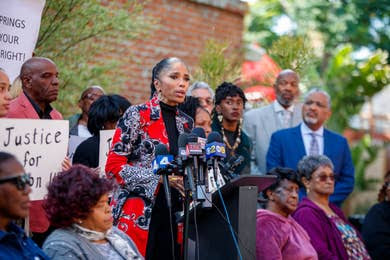| (BXC Media Wire – 12.08.22) — Tulsa and Rosewood are the places that rush to mind when people think of the recent brutal, forced displacement of people of color. What about Palm Springs, Calif.? City officials and land developers, looking to capitalize on rising land values, colluded to forcibly remove hundreds of Black and Mexican families from a one-mile section of land known as Section 14. Now, more than a half-century later, the City of Palm Springs, Calif., is hiring a economic consultant to help develop a reparations program to enhance the quality of life for those affected by this displacement Attorney Areva Martin, who represents the Section 14 families in a lawsuit against the city, says it is the first step in compensating victims who once called the neighborhood home. “Under increasing pressure from claims by the Survivors of Section 14, the City of Palms Springs is currently requesting proposals from qualified firms to provide reparations program services,” added Martin.  Areva Martin, attorney for the Section 14 Group, speaks during a press conference in Los Angeles, Calif., on Nov. 29, 2022.PHOTO CREDIT: TAYA GRAY/THE DESERT SUN Areva Martin, attorney for the Section 14 Group, speaks during a press conference in Los Angeles, Calif., on Nov. 29, 2022.PHOTO CREDIT: TAYA GRAY/THE DESERT SUNThe neighborhood is owned by the Agua Caliente Band of Cahuilla Indians and was the primary residential area for people of color from 1930 to 1965. The forced eviction of Black and Mexican families began in late 1954 and continued through 1966. According to a 2019 article in American Indian, the magazine of the Smithsonian’s National Museum of the American Indian, Palm Springs’ World War II military base and a burgeoning tourist industry attracted workers of color and low-income families who often encountered housing discrimination. “In response, individual Agua Caliente tribal members leased their lands on Section 14 to them, which provided these new residents homes and tribal members a source of income.” But as Palm Springs’ popularity grew, so did the demand for developable land. City leaders could not acquire tribal owned land outright, so they manipulated building codes and zoning ordinances as a means to gain control of Section 14, telling tenants they must either bring their homes up to code or be evicted. The displacement of Black and Mexican families began in late 1954 and continued through 1966. During 1965 and 1966 alone, the city demolished and burned at least 235 buildings, according to American Indian magazine. The city formally apologized in September 2021 but offered no compensation. Now, in an unprecedented move, Martin is working with Palm Spring City Attorney Jeffrey Ballinger to develop a formal reparations program. She considers the calling for bids for a reparations consultant a huge win for the families, and encourages multicultural operators to apply. A link to the City Of Palms Springs RFP may be found here on Plant Bids, which is the site used to submit proposals to the city. The scope of work for the Reparations Services position includes: verifying the historical context of residents displaced from the Section 14 land in downtown Palm Springs and developing a reparations program to enhance the quality of life for those affected by this displacement. Martin believes, “the RFP is a small step in the long-overdue right direction to address the brutal history outlined in claims filed by Section 14 survivors and descendants.” |
| TO SUBMIT RFPLink: HereProject Title: Reparations Program ServicesInvitation: # RFP 12-23Bid Posting Date: 11/17/2022 3:40 PM (PST)Project Stage: BiddingBid Due Date: 01/12/2023 2:00 PM (PST)Response Format: ElectronicContact: Kim Baker Phone:760-322-8368Email: kim.baker@palmspringsca.govBackgroundWhile promoting an image of Hollywood luxury in the 1950s and 1960s, the City of Palm Springs’ racially restrictive covenants prohibited Black people from sharing that good life or living in white neighborhoods. Instead, Black and Mexican Americans could only build homes in the Section 14 area of the Agua Caliente tribe’s reservation. Then, over a 10-year span from the late 1950s through the 1960s, Palm Springs hatched a plan to demolish Section 14 for the purposes of developing it into more lucrative commercial enterprises. To gain possession of this prime downtown real estate, the city hired contractors to bulldoze the privately-owned houses, often with personal property and belongings inside, and then the city sent the Palm Springs Fire Department to burn the destruction. Black and Mexican residents were often forced to flee Section 14 with only what they could carry. Assessing Harm and Moving toward HealingThe Section 14 families retained renown reparations expert, Dr. Julianne Malveaux, noted economist, Cal State, LA Dean of Ethnic Studies, author, and president emeritus of Bennett College, to conduct a preliminary harm assessment on their behalf. Her calculations estimate the damages caused by the city of Palm Springs to survivors and their descendants to fall between $400 million to $2 billion dollars. To reach this figure, Dr. Malveaux utilized a model widely employed by economists when calculating destruction to communities caused by natural disasters such as wildfires, neighborhoods and tornadoes, or other calamities that have obliterated entire neighborhoods. |
| BXC MEDIA WIRE – ALERT – BXC MEDIA WIRE – ALERT – BXC MEDIA WIRE |


